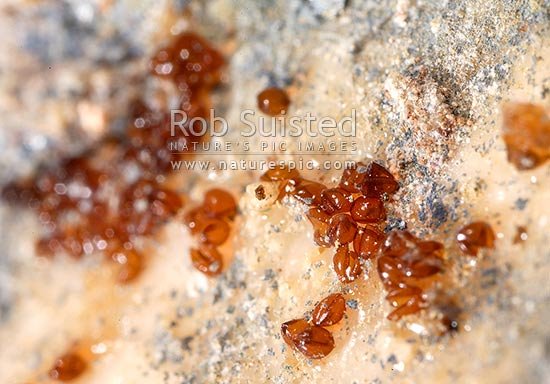
Whether you’re a nature enthusiast or just curious about these little wonders, you’re in for a treat. Imagine being a backyard scientist, uncovering the mysteries of these enchanting critters, not just their luminescent beauty but their beginnings too. Here’s everything you need to know about glow worm eggs, from spotting them to giving them the best chance to thrive.
What Are Glow Worms?
Glow worms are fascinating insects, and they belong to various families, the most famous being the *Lampyridae* family. While adult glow worms are known for their enchanting glow, it’s important to understand that this glow comes from a chemical reaction in their bodies. The glow attracts prey and mates. But even before they light up the night, these future glow worms begin their journey as eggs.
The females lay their eggs in damp, dark places, often in leaf litter or on the ground. This specific environment provides the right conditions for the eggs to develop. You might be wondering what these eggs look like, and that’s a great question. They are small, typically around 1-2 millimeters, and can resemble tiny pearls or grains of sand.
Identifying Glow Worm Eggs
Identifying glow worm eggs can feel like a mini treasure hunt. If you’re on the lookout, here are some characteristics to help you spot them:
- Size: Glow worm eggs are tiny, often smaller than a pinhead. You’ll need a keen eye!
- Color: Newly laid eggs are usually white or translucent, and they can look like small beads scattered among leaves.
- Location: Look in damp, shaded areas—under logs, in leaf litter, or in moist soil.
Here’s the thing: distinguishing glow worm eggs from other insect eggs can be tricky if you’re not familiar with them. Often, they blend in with their surroundings. If you’re unsure, consider using a magnifying glass to get a better view. You might find it a fun little adventure!
How Glow Worm Eggs Develop
Once the female glow worm lays her eggs, a fascinating process begins. Depending on species and environmental conditions, the eggs take about two to three weeks to hatch. The right conditions are crucial for successful hatching—warm temperatures and moist environments encourage healthy egg development.
Once hatched, the larvae (also known as glow worm larvae) emerge. They are tiny and fragile, but they quickly start displaying the glow that makes them famous. This glow is essential for their survival, as it attracts prey—mostly small insects—allowing them to thrive. The larvae will spend their early years in this stage before finally transforming into adult glow worms.
Here’s a fun fact: the larvae can glow for prolonged periods, which is quite different from the adults, who might glow only during specific times. This adaptation helps them survive longer in their earlier life stages.
Care Tips for Glow Worm Eggs and Larvae
If you’re lucky enough to come across glow worm eggs or larvae and want to care for them, here are some tips:
1. Create the Right Environment: Ensure a dark, humid place for the eggs. A small terrarium with damp soil, leaves, and even some decaying matter can mimic their natural habitat.
2. Maintain Moisture: Lightly mist the terrarium every few days to keep the humidity high, but avoid soaking the soil. Too much water can drown the eggs or larvae.
3. Temperature Control: Keep the temperature consistent and warm, ideally between 20-25 degrees Celsius (68-77 degrees Fahrenheit). Too much cold can hinder development.
4. Feeding the Larvae: Once they hatch, larvae need food! They mainly eat small insects (fruit flies work great). Just sprinkle some in their habitat to keep them fed.
Care can feel a bit like playing a game of hide-and-seek. You want to provide the best conditions while letting nature take its course.
Challenges in Raising Glow Worms
If you’re embarking on the journey of raising glow worm eggs and larvae, be prepared for some challenges. It’s not always smooth sailing!
– Temperature Fluctuations: Sudden changes in temperature can stress your glow worms. Keeping a steady environment is key!
– Overfeeding or Underfeeding: It can be tempting to feed them lots, but larvae don’t need huge meals. Keep portions small!
– Pest Intrusions: Sometimes, other insects might invade the habitat. Ensure it’s a closed environment to minimize unwanted guests.
Navigating these challenges may feel daunting, but with patience, you can enjoy the process and witness the beauty of glow worms as they develop.
The Importance of Glow Worms in the Ecosystem
Beyond their beauty, glow worms play a vital role in our ecosystem. They’re part of the food chain, serving as a food source for birds and other animals. Their presence can also indicate healthy, balanced ecosystems.
You might find it interesting that certain species of glow worms are even used as bioindicators. This means scientists can study them to assess environmental health. A thriving glow worm population often signals a clean, unpolluted habitat.
Supporting glow worm conservation efforts is essential. Preserving their natural habitats helps ensure that these enchanting creatures continue to thrive and contribute to the ecosystem.
Glow worm eggs and their larvae offer a unique glimpse into one of nature’s wonders. With just a little bit of care, you can observe the life cycle of these enchanting insects from the very beginning. Whether you’re drawn to their stunning glow or their role in the ecosystem, understanding how to identify and care for glow worm eggs brings you closer to the magic of nature. So next time you’re out exploring, keep an eye peeled for those tiny, glittering eggs—you might just find your own little piece of glowing happiness!
